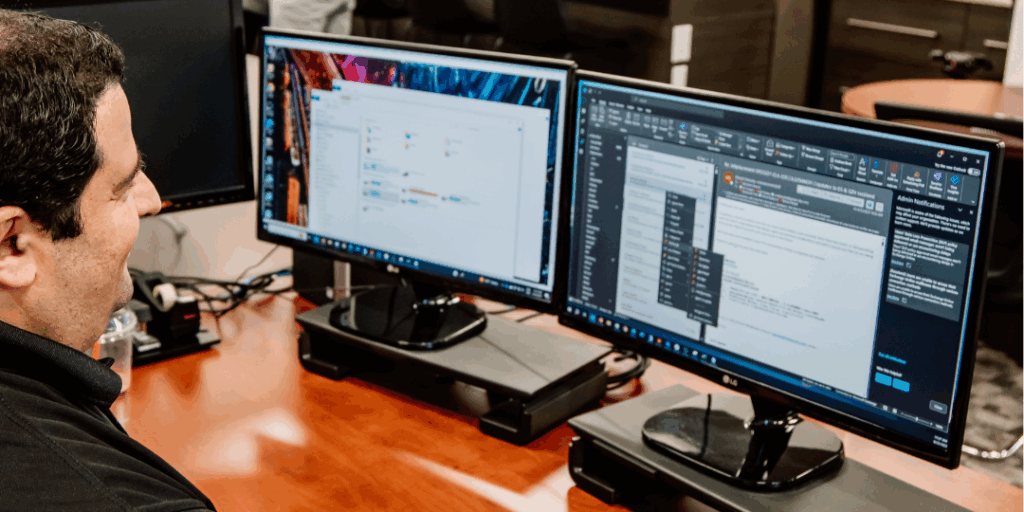
PPT translation is essential for effective communication in multilingual business meetings, eLearning modules, and global markets, with trends highlighting increased budgets, faster turnarounds, and a focus on emerging and Asian markets.
Topics covered in this article:
- Making an Impact with PPT Translation
- Trends in PPT Translation Interpretation
- The Future of PPT Translation
Making an Impact with PPT Translation
Companies and organizations can make a real impact with PPT localization. Since localization is the process by which content is adapted into a new market/culture, it makes sense that this process yields big results when PPT information is translated into new target languages.
PPTs have been a staple of business meetings around the globe for decades. By translating your PPT materials, speakers can highlight essential information in many different languages while sharing images, graphs, and charts that complement and further clarify spoken information from the presentation. It has even crossed over to be part of eLearning translation projects, as many course modules created by businesses and schools alike include PPT resources. Now that business meetings, presentations, workshops, and conferences are made up of multilingual audiences, PPT translation is vital. Understanding the important translation trends of 2018 shows the impact that localizing PPTs can have.

Additionally, other adaptations can be made to ensure that the visual components also convey information accurately and that the idioms and region-specific references are customized to new markets. Localization experts will attend to details, such as text expansion and contraction, to ensure that layout and design of the slides complements the text. By applying principles of graphic design, including contrast, proximity, alignment, and repetition, all of the localized content will be visually stunning, in addition to accurate and clear.
In short, PPT translation takes concepts that would be foreign and makes them familiar. When international audiences can easily access and process the information that PPT materials convey, they are much more likely to understand and act. This genuine interest in new audiences can help businesses gain new market shares, and it can also help with global employee training and retention. PPT translation is a way to build trust and establish rapport, winning over new clients and customers, and creating a more dedicated and knowledgeable workforce.
Trends in PPT Translation Interpretation
Before you can appreciate the importance of PPT translation, it is necessary to understand the expected trends in the translation and interpretation fields, including those related to PPT translation. These trends include:
- Bigger budgets for translation. In a recent survey, 94% of multinational companies intend to boost their localization spending. That means more digital and print content will be translated and shared globally. As this content is shared at workshops and conferences, there will also be a greater demand for interpretation.
- Demand for faster turnaround. Companies and organizations are going to continue to expect efficiency when it comes to translation and interpretation. This is especially noteworthy considering the fact that translated content is no longer just words on a page, but it often includes graphic and/or audio components as well.
- Expanding into new markets. The aforementioned marketing research also found that multinational companies are determined to expand into an average of 7 new markets. That is on top of their existing market reach, which also averages out to 7 current markets. As a result, there will be a growing need for translation and interpretation in multiple languages. Since individual companies want to make this growth, there will have to be a streamlined workflow between the companies and the translator service providers.
- Focus on emerging markets. As of right now, the United States is the market leader in terms of translation needs. However, in the next year, growth will continue to boom in the emerging markets of Africa and the Middle East, with others on the horizon. That means that there will be an increased emphasis on localizing material that fits those cultures and languages.
- Emphasis on Asian languages. There are over 950 million native Chinese speakers, so it makes sense that Chinese continues to rank in the top spot for business translations languages. Japanese and Korean will continue to be popular, as well. It is also worth noting that Hindi is the 4th most widely-spoken language in the world, causing a new emphasis on translating into this sub-continental Asian language.
- Attention to more than words. Multimedia digital content needs to reach all of these markets in a variety of formats. As a result, companies will need to focus not just on spoken and printed word, but also the preservation of graphic design elements. For instance, A translated PPT could be shared at a conference with multilingual audiences, challenging businesses to find the best technology for the audience’s interpretation needs.
The Future of PPT Translation
In 2010, companies were investing $26 billion in translation and localization work. Midway through the decade, that figure soared to $38 billion. Marketing research suggests that growth shows no signs of slowing down. Why the interest in translation and localization? The trends in translation point to the fact that multinational companies are looking to continue expanding into more foreign markets, causing a real need for PPT translation and other translation and localization services. As the saying goes, your spending reveals your values. That means more and more companies are placing a real value on reaching as broad of a client base as possible in 2018 and beyond.
Ready to translate your PPTs for a multilingual audience?
- Review your options of the different ways to translate a PPT with our PowerPoint Translation blog.
- Decide the languages and PPTs you will need translated.
- Partner with a qualified translation service experienced in educating without language barriers. Interpro offers complimentary localization consultations if you’re ready to start translating just a single PPT or an entire eLearning course with PPTs translation included.
Category: Translation
Tags: PPT Localization, PPT Translation, PPTX Localization, PPTX Translation
Service: Document Translation
Don't forget to share this post!
Stay Updated with Interpro
Subscribe to our newsletter for the latest updates and insights in translation and localization.





